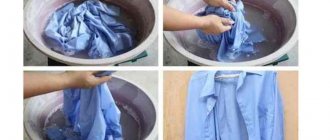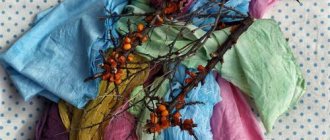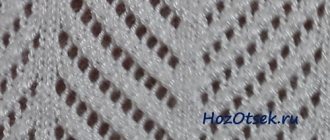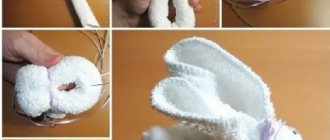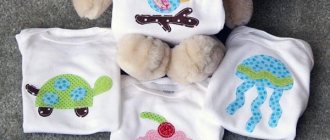Balloons delight the eyes of every person at various festive events, but after their completion one very important question immediately arises: “How to untie the balloon?” Many people leave the balloons inflated until they are completely deflated and then throw them away. But what if you really liked the ball and want to keep it? Naturally, you won't want to throw it away. How to untie the ball in this case? There is one good way to do this, but as you read the article, you will quickly realize that preventative measures are the most reliable.
Cleaning without siphon
In the natural environment, there are a large number of participants in the ecosystem: leftover food and fish excrement are eaten by snails, shrimp and bacteria. But to maintain cleanliness in the aquarium, their owners will have to work hard to properly maintain the fish.
Aquariums should be washed carefully and without sudden movements. Remember, interfering with the underwater world causes stress for its inhabitants. Cleaning the soil begins with plants and decorative elements
Large pebbles, shells, houses and castles should be taken out and washed under running water. Plants and algae are carefully inspected for defects. If they have yellowed or rotting leaves, they are carefully removed. When cleaning the bottom of the aquarium, it is better to immediately replant the plants, if necessary.
Cleaning of the soil begins with plants and decorative elements. Large pebbles, shells, houses and castles should be taken out and washed under running water. Plants and algae are carefully inspected for defects. If they have yellowed or rotting leaves, they are carefully removed. When cleaning the bottom of the aquarium, it is better to immediately replant the plants, if necessary.
If you clean the soil without a siphon, you can simply rinse it under running water. In this case, the fish should be transplanted into a separate container (basin, bucket).
This procedure looks like this:
- The soil is taken from the aquarium.
- Pours into a bucket.
- It is washed at maximum pressure until all the dirt is washed out.
- It is best to wear a rubber glove and periodically stir the soil in the bucket.
Process
The preparations are over - now you need to figure out how to untie the knot on the ball. This will not be as easy as you would like - even with everything you have done so far. Arm yourself with a knitting needle, and as soon as the threads become more pliable, look for the place where they lag behind each other. As soon as you find such a place, insert the knitting needle there and begin to move it forward, lubricating it with oil if necessary. You will eventually be able to untie the knot if you are patient and can carefully manipulate the knitting needle without damaging the ball itself. However, it cannot be said that this is the answer to the question of how to easily untie a ball - the process is very unpleasant, complex and lengthy. Therefore, as mentioned earlier, preventive measures are the best solution in this situation.
Other nodes
If you don’t want to suffer with knots on balls, then you should forget about using regular threads. You can take acrylic yarn or any other thick threads with a sliding surface that can be easily untied in the end. However, this is not the only way - you can also use the ball itself to fix the air inside. To do this, after inflating it, you need to pull its end as far as you can without releasing the air. Then you need to twist the resulting tail several times, and if you think that after this the ball does not look its best, you can decorate it with some decorative braid. Such a knot will also be much easier to untie than the one formed from a regular thread. So now you know how to untie a regular knot, and also how to make a knot that will be much easier to untie.
Types of starching
Before touching on the issue of starching itself, you need to determine which products cannot be starched:
- Various types of synthetics;
- Products with dark threads, as white spots may appear on the latter;
- Underwear, because a starched product will not “breathe”.
Starching can be divided into several types - it all depends on the specific item and the desired result:
- Soft method. The substance is prepared at the rate of 1 tbsp. l. starch per 1 liter. boiling water This method is ideal for handkerchiefs and any other light fabrics - dresses, blouses, etc.;
- Medium density. The same as the previous one, but the ratio of starch to water is 1.5 tbsp. l. for 1 l. Suitable for all types of white linen, curtains, tulle, etc.;
- The hard way. In 1 l. boiling water dissolves a couple of tablespoons of starch. Then parts of the clothes are bleached separately - collars, cuffs, etc.
Signs of dirty filter elements
Filter models are different and devices for small aquariums need to be cleaned more often than those for large ones. When determining contamination, you need to take a closer look at the water flow from the device. If the flow becomes weaker, then this is a sign that flushing is required. If the water in the reservoir becomes cloudy, this also serves as a signal that the filter is dirty.
Preparation
So, it's time to figure out how to untie a ball tied in a knot. To do this, you will need vegetable oil or a little high-fat cream, as well as a knitting needle. It should be immediately noted that for this process many will want to use, for example, a needle, since it will seem like a more convenient and effective device. But this is far from true - of course, with a thin needle it would be easier to do what will be described shortly, however, there is a high probability that with one light touch you can, if not burst the ball, then at least make a micro hole in it, from for which you will no longer be able to cheat him. So it is best to take a knitting needle that does not have such a sharp end, although it is thicker. But everything has its time - first the node must be prepared. Drop oil on the knot or lubricate it with cream, after which you need to take it between your fingers and rub it a little to loosen it at least a little. Due to the action of your “lubricant,” the thread will become more pliable, so this is how you can find out the answer to the question of how to untie a ball tied in a knot.
How to starch a knitted product
We use starch
Various types of starch are used - potato, corn, rice. The most commonly used is potato. It is the most affordable, and the solution with it is concentrated.
Method one - hot
First you need to prepare a solution. To do this, heat the water in a container large enough to accommodate the item being processed. Bring the water to a boil and pour the prepared starch solution into it in a thin stream, stirring continuously.
Solution concentration:
- soft starching - calculate 1 tablespoon per 1 liter of water;
- average - one and a half tbsp. spoons per 1 liter;
- hard - 1 tbsp. spoons per 1 liter.
To prepare a starch solution, you need to pour it into a small container and add 1 glass of cold water. Then mix thoroughly so that there are no lumps. If desired, you can add laundry blue to any of the solutions by first diluting it and straining the solution.
There is an opinion that the best effect is achieved if you replace water with milk. But, if you can use any starch with water, then it is advisable to mix only rice starch with milk.
True, some craftswomen criticize this decision, arguing that after milk the product retains a characteristic smell. In any case, the choice is yours.
Bring the solution to a boil to avoid a cloudy tint. If you add a good pinch of salt to the solution, the product will also acquire a beautiful shine. Remove the solution from the heat and let cool. Next, you can proceed using different methods, depending on the size of the product.
Soak
We immerse the entire product in the solution.
We make sure that no corners of the starched item come to the top. If necessary, lower them into the solution with a stick.
Let stand for an average of 10 minutes so that the starch is absorbed into the material. For thick threads, you can increase the time to 15 minutes. For thin threads (this is how napkins are usually knitted), a sufficient holding time of 5-7 minutes.
After the required time has passed, place the items on the edge of the container, allowing the water to drain. Lightly squeeze and place on a horizontal surface.
We straighten the product, giving it the desired shape, and fix it with pins until it dries.
Advice - how to starch a napkin and preserve the openwork pattern
If you are starching an openwork napkin, then it is advisable to first redraw the shape and pattern onto a white cloth or absorbent paper. This will then help to correctly fix the fragments of the pattern according to the drawing.
Working with a brush
We will need a regular wide paint brush. We slightly moisten the product and lay it out on a flat surface covered with a cloth. Let's level it out. Then apply the paste evenly with a brush. Let it dry. This method is especially in demand when you need to starch not the entire product, but its individual parts.
Spraying
The prepared solution is poured into a sprayer and sprayed onto the fabric. Delicate items are usually starched in this way, using a weak concentration of starch.
Method two - cold
Suitable for products subject to mild starching.
Dissolve starch in cold water. Stir, eliminating all lumps. We place the item in it and leave it for 30 minutes. Then we squeeze it out and place it on a horizontal plane. Straighten, fix the edges and dry. If we are processing a product that has a three-dimensional shape, then after spinning we place it on a workpiece of the desired profile and dry it.
Method three - dry
A very easy and quick method that does not involve cooking paste. True, the result is short-term. But, as an emergency solution, it has a right to exist.
Place a napkin on clean paper and moisten it with a spray bottle. Sprinkle starch (potato or rice) on top and rub it into a napkin. Shake off excess starch. Finally, iron the product through the gauze to make it tougher.
Method four - in the microwave
With this interesting method you can quickly and permanently starch a panama hat, hat or other item.
Prepare a solution from 1 liter of cold water plus 2 tbsp. spoons of starch. Pour the solution into a container suitable for heating in the microwave. Quickly stir the solution and dip the cap into it. Place the dishes in the oven for 5 minutes at maximum power.
Then, after cooling a little, squeeze it lightly. We put it on a suitable form and leave it until dry.
Things starched using this method retain their shape even after washing.
We use sugar
Concentrated sugar syrup makes knitted items stiff when they harden. But keep in mind that knitted items treated with diluted sugar can attract various insects - flies, ants.
Pour two glasses of sugar into one glass of warm water. Then place in a water bath and stir constantly. After waiting until the mixture begins to thicken, remove from heat and leave to room temperature. After this it is applied to the product.
A less weak solution concentration - 3 tablespoons of sugar per 100g of water + 1 teaspoon of starch is brought to a boil over direct heat. First, starch is diluted in cold water, sugar is boiled in hot water. Then the mixtures are combined and brought to thickness. And in this case you need to stir constantly.
The paste is boiled until bubbles appear around the edges.
Place a napkin in the cooled solution, leave for 15 minutes, then wring out and dry as recommended above.
You can also cover the product with a brush with the prepared solution, and the number of layers is determined depending on the desired hardness of the product.
We use PVA glue
Another alternative way to starch crocheted or knitted items if there is no starch. You can starch napkins, hats, and vases using PVA glue. Since it is water-based, it is ideal for solving this problem - it is easily diluted with water to the desired concentration and does not leave stains on things.
Step-by-step instructions will help you figure out how to complete the process correctly:
- dilute glue with water. Proportion 1:1 or 1:2 depending on the required hardness;
- immerse the product in the solution or apply diluted glue in another way (brush, spray);
- lay out the flat product on a plane covered with a white cloth; We put the voluminous product on the prepared form. If you use improvised means as a form - a vase, a pan, then it is advisable to first wrap it in cellophane film;
- dry the starched item at room temperature;
- If at the end of the process it turns out that the shape needs to be adjusted, then we hold the defective fragments over steam, then give it the desired shape and dry it.
We use silicate glue
Prepare an aqueous solution of glue - 1 teaspoon per 5 liters of water. Then we repeat all the previous technology.
We use gelatin
An undoubted advantage of using gelatin is that it does not crumble, unlike starch, and therefore keeps its shape perfectly until the next wash.
Solutions using gelatin:
- The first option is to pour two tablespoons of gelatin into one glass of cold water and place in a water bath. Heat until the ingredient is completely dissolved. If there are any undissolved lumps left, remove them;
- the second option is used to obtain denser and stiffer products. Pour one packet of gelatin and one tablespoon of salt into a container. Pour in 0.5 liters of water. Heat in a water bath with continuous stirring. When the gelatin is completely dissolved, remove the solution from the heat, avoiding boiling;
- The third option is used when a knitted item needs to be given a little elasticity. One teaspoon of gelatin and 0.5 teaspoon of glycerin are diluted in a glass of cold water. Leave the gelatin to swell. Then heat in a water bath until the gelatin is completely dissolved.
Cover the product with the prepared solution or immerse it completely in the solution for 10-15 minutes. Next, give it the desired shape and dry it.
We use ready-made mixtures
Gloss – starch
This mixture gives the desired rigidity to the product and creates a beautiful shine on the surface. It contains starch (rice or wheat), white talc, borax powder in a ratio of 5:3:1. The second composition option is rice starch, borax, boric acid in a ratio of 8:10:2.
Mix all ingredients well, add water to the mixture until it becomes mushy. Then we apply the paste to the item being treated using a sponge. Finally, iron the product. It is under the influence of temperature that we obtain the desired density and gloss.
Solution - fixative
The finished solution is sold in aerosol packaging. Before ironing, treat the selected surface.
In conclusion, an important piece of advice: if you do not have experience in starching products, then before starching a knitted napkin, start with tests on waste material. The indicated proportions of solutions are very arbitrary; it all depends on the composition and properties of the material. You can determine the desired concentration for yourself only experimentally.


